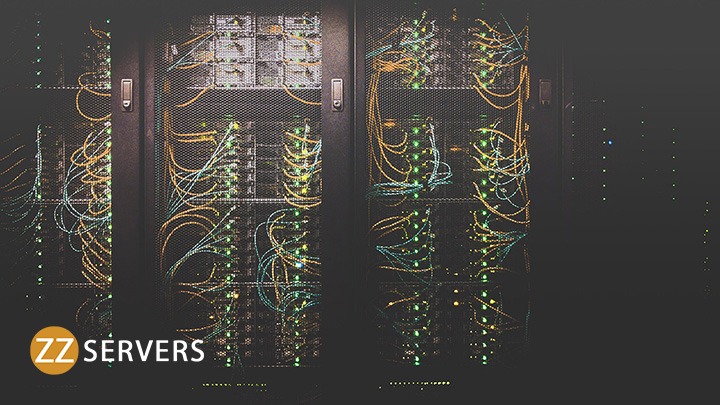IT integration services help join together different IT systems within an organization. The main goal of IT integration is to streamline business processes by allowing easy movement of data between separate applications and platforms. Some key things IT integration services do include:
● Allowing different software programs and databases to share information
● Enabling a smooth workflow by automating tasks and processes across departments
● Consolidating multiple systems into a single platform for improved management
Standardizing data formats and structures to ensure consistency throughout the organization
By integrating various IT tools and resources, companies can better organize their operations, boost productivity, and make data more accessible to teams. It helps drive informed decisions, enhances collaboration, and spares time spent on repetitive manual tasks. The result is stronger performance through optimized utilization of existing digital infrastructure and investments.
What are the main types of IT integration services?
There are typically three main categories of IT integration services that companies utilize – platform integration, application integration, and data integration. Each type serves a distinct purpose based on business needs.
● Platform Integration: Platform integration involves joining different operating systems, hardware, and infrastructure together. It allows various devices and systems to communicate seamlessly in the same technical environment. For example, they are integrating an organization’s Windows servers with Linux machines or connecting on-premise data centers with cloud-based platforms. IT teams use virtualization, APIs, and middleware for this type of integration.
● Virtualization: One key technique in platform integration is virtualization. It allows companies to run multiple virtual operating systems on a single physical server simultaneously. It improves hardware utilization while reducing costs. Virtualization also provides flexibility – virtual servers can be easily created, moved, or copied as needed.
● Application Integration: As the name suggests, application integration is about linking disparate software programs within an organization. It could mean different CRM, ERP, or billing systems sharing customer records. Or production and quality control apps exchanging manufacturing data in real-time. Common integration approaches here involve APIs, web services, and integration brokers.
● Integration Patterns: Some popular integration patterns used in application integration include enterprise application integration (EAI), enterprise service bus (ESB), and microservices. EAI focuses on connecting legacy systems. ESB acts as a message broker between apps. Microservices break large apps into smaller, independent pieces.
● Data Integration: The goal of data integration is to consolidate information from various sources – databases, data warehouses, data lakes – into a single location for analysis. Extracting, transforming, and loading (ETL) processes are core to data integration. Data profiling and quality checks are also important to ensure uniform, error-free data across systems.
Platform Integration Services

Platform integration allows organizations to maximize their existing IT infrastructure investments. By integrating different operating systems and hardware, companies can build robust, scalable, and flexible environments. Let’s explore some aspects of platform integration services in more detail:
Virtualization is a core component of platform integration. Virtualizing servers creates logical systems that can be easily managed on a centralized physical host. It improves resource utilization significantly.
Benefits of Virtualization
Some key advantages that virtualization brings include:
● Cost savings from consolidating servers
● Higher uptime since virtual machines can be live migrated
● Flexibility – virtual servers can be provisioned in minutes
● Testing new applications and OS in isolated virtual environments
● Disaster recovery – virtual servers can run at an offsite location
Cloud Integration
Integrating private data centers with public cloud platforms allows organizations to scale elastically on demand. It is done via hybrid cloud models and technologies like site-to-site VPN.
APIs for Integration
Platform integration heavily relies on APIs to facilitate interoperability between systems. Common API types used include REST APIs and SOAP web services. Well-documented APIs help establish seamless connectivity across platforms.
Integration Consulting Services
Experienced consultants can analyze your infrastructure, identify integration opportunities, and recommend optimal solutions. They also handle complex deployment and management aspects.
Application Integration Services
Application integration allows organizations to derive more value from their existing software investments. By linking disparate systems, businesses can streamline processes and access a unified view of critical business data.

Integration Patterns
There are various integration patterns used depending on the type and complexity of apps involved. A popular approach is Enterprise Application Integration (EAI). EAI hubs act as a centralized interface, standardizing communication between legacy systems.
Enterprise Service Bus
For integrating diverse modern apps, an Enterprise Service Bus (ESB) serves as a backbone. It establishes a common infrastructure for apps to connect and exchange data via published services. ESBs support advanced features like message routing and transformation.
Microservices is another growing pattern for dividing monolithic apps into independent, self-contained modules. Each microservice focuses on a specific task and communicates via lightweight APIs. It makes apps highly scalable and adaptable to change.
Integration Tools
MuleSoft, Dell Boomi, and Informatica are some leading integration platform providers (IPP). Their cloud-based platforms offer pre-built connectors and low-code configuration tools for linking a variety of apps. For custom integration, open-source ESBs like Apache Camel are popular.
Choosing the Right Tool
Factors to consider when selecting integration tools include the number of apps, complexity of integrations, scalability needs, and licensing/support costs. An IPP may suffice for simpler scenarios, while an ESB works better for complex enterprise-grade integrations.
Data Integration Services
Data integration is crucial for businesses to generate actionable insights from their vast data assets. By consolidating information into a centralized system, organizations can perform advanced analytics and make informed decisions.
● ETL Processes: At the core of data integration are Extract, Transform, and Load (ETL) processes. Data is extracted from various sources, transformed to a uniform format, and loaded to a target system like a data warehouse or lake. It ensures consistent, cleansed data is available for analysis.
● Data Transformation: During the transformation stage, ETL jobs perform tasks like data type conversions, calculations, filtering of bad records, deduplication, and enrichment with metadata. It prepares raw source data for analytics consumption.
● Data Quality Checks: Techniques like profiling, validation, and matching are used to surface discrepancies and anomalies in the data for fixing.
● Data Profiling: Profiling analyzes the structure, patterns, and relationships in data. It provides insights into data quality issues, missing elements, outliers, etc., so remedial actions can be taken during transformation.
● Integration Tools: Popular ETL tools for data integration include SSIS, Apache Spark, Pentaho Data Integration, and Informatica PowerCenter. These offer graphical workflows for modeling ETL processes along with a wide range of pre-built components for common extraction, cleansing, and loading tasks.
Other IT Integration Services
While platform, application, and data integration are core categories, there are some additional integration-related services that organizations leverage:
● Integration Management Services: Managing integrations involves activities like monitoring performance and dependencies, handling change requests, documenting processes, and testing for upgrades/migrations. Specialized tools help automate these management tasks.
● Integration Consulting: Experienced consultants guide complex integration initiatives. They assess business requirements, evaluate technical options, develop migration plans, and support deployment through integration best practices.
● Security Services: As systems interconnect, ensuring end-to-end security grows in importance. Services like identity and access management, encryption, and single sign-on help address integration security challenges.
● Identity & Access Management: Centralized IAM services deliver a single source of user credentials across integrated systems for secure, streamlined access governance. Role-based access control further restricts what actions a user can perform.
● Support and Maintenance: Once live, ongoing support from integration partners keeps integrated systems running optimally. It involves application management, issue resolution, monitoring upgrades, and documentation updates. Managed services provide 24/7 support.
● Upgrades and Migrations: Migrating to new versions or replacement systems requires careful planning and execution to minimize disruption. Specialists help test compatibility, develop cut-over plans, and provide change management support.
Leverage ZZ Servers’ Expertise to Streamline Operations Through Strategic Integration
Are you looking to streamline your business processes through strategic IT integration but need help determining where to begin? As a trusted IT services provider for over 17 years, ZZ Servers can help you realize the full benefits of integration. Our team of experienced consultants will conduct a comprehensive assessment of your current infrastructure and applications to understand pain points and integration opportunities. We will then recommend tailored, cost-effective solutions to optimize systems and information flow through application, data, and platform integration. Whether you need help with an initial integration project or ongoing management and support, contact our integration specialists today at 800-796-3574 for a free consultation. Let us simplify your operations through strategic integration done right.
Frequently Asked Questions
u003cstrongu003eWhat is the difference between integration and interface?u003c/strongu003e
Integration involves linking diverse systems to exchange and share data seamlessly. An interface only enables one-way communication between two systems. While interfaces establish connections, integration facilitates a bi-directional, free-flowing exchange of information across multiple touchpoints.
u003cstrongu003eHow do I choose the right integration strategy?u003c/strongu003e
Consulting with integration experts helps identify opportunities, evaluate alternatives like on-premise vs cloud-based tools, and recommend a tailored approach that balances requirements with flexibility for future changes.
u003cstrongu003eWhat skills are required for an IT integration specialist?u003c/strongu003e
Strong technical skills in platforms, applications, and tools used for integration, like APIs, ETL, ESB, etc., are essential. Equally important are process design, documentation, testing, and troubleshooting abilities with an eye for detail. Integration specialists also need communication and collaboration expertise to understand business needs accurately for optimal solutions.
u003cstrongu003eWhat are some common integration challenges?u003c/strongu003e
Data quality, incompatible technologies, complex legacy systems, security vulnerabilities, and organizational silos can impede smooth integration. Rigorous testing, change management protocols, centralized standards, and expert guidance help overcome these challenges for successful integrations.
u003cstrongu003eHow much does IT integration typically cost?u003c/strongu003e
Integration costs vary widely depending on the scope of work, tools, and level of support required. However, the business outcomes of optimized operations, cost reductions, and insights-driven decisions through integration far outweigh such investments over the long term for most organizations.


